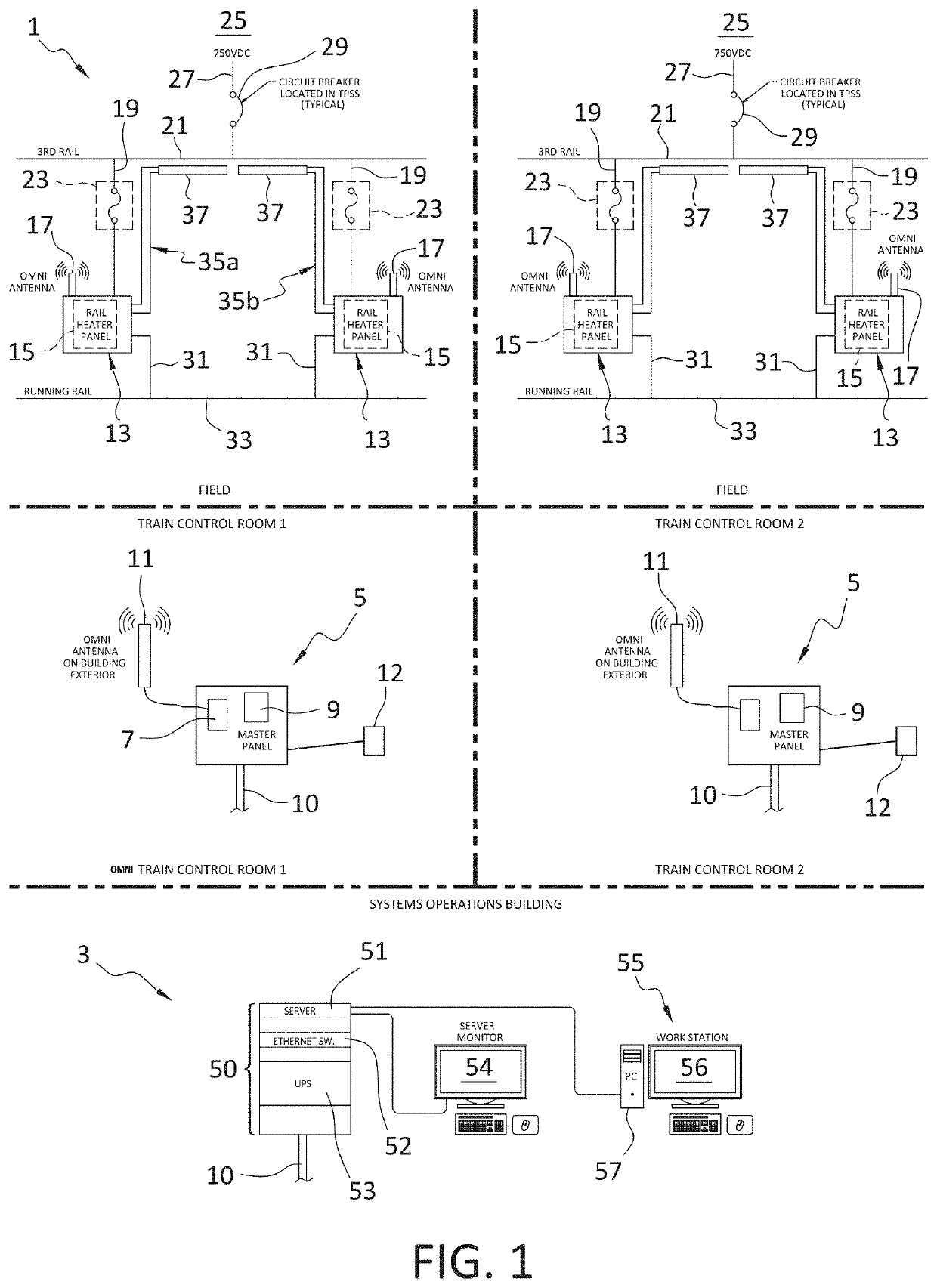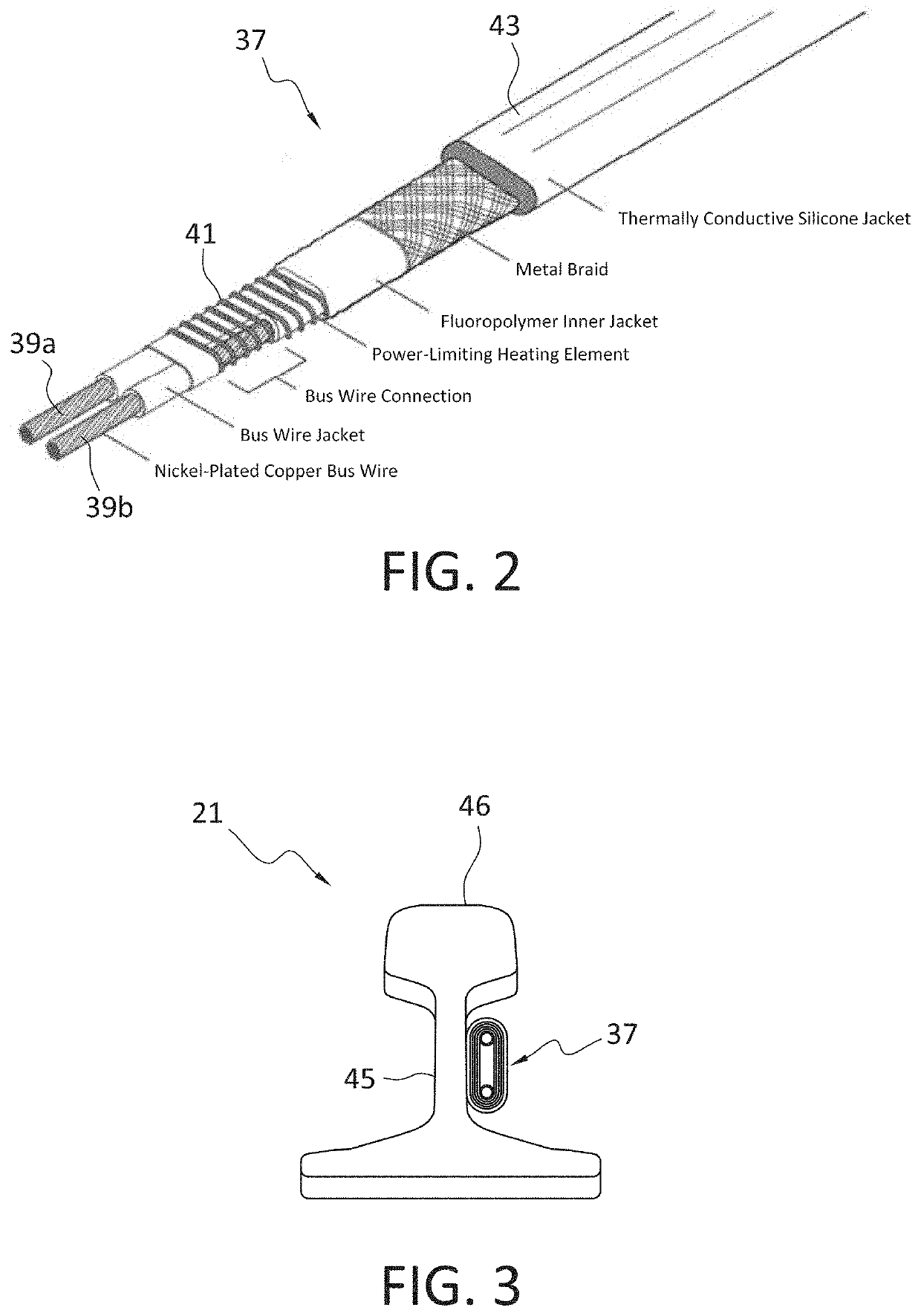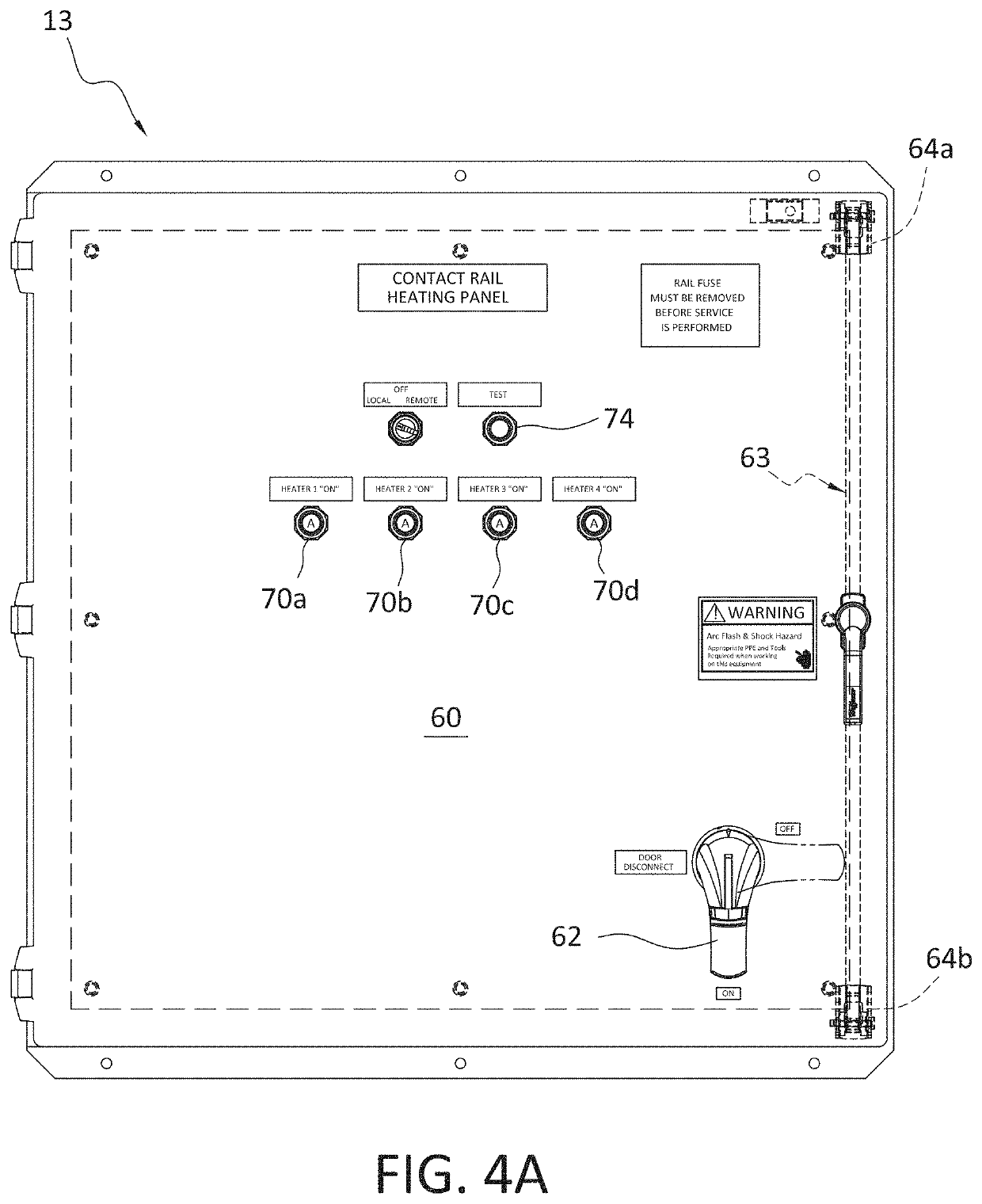Third rail heater control system
a control system and heater technology, applied in the direction of power rails, railway cleaning, railways, etc., can solve the problems of high voltage inability to control the temperature of the heater, etc., to achieve maximum energy saving, reduce the operational distance of the radio link, and increase the overall robustness of the communication link
- Summary
- Abstract
- Description
- Claims
- Application Information
AI Technical Summary
Benefits of technology
Problems solved by technology
Method used
Image
Examples
Embodiment Construction
[0030]With reference to FIG. 1, the third rail heater control system 1 of the invention generally comprises a master control station 3 remotely located from the railway stations, a plurality of local relay units 5 located in the railway stations (which together form the digital controller of the system), and a plurality of trackside junction boxes 13.
[0031]The local relay units 5 each include a transceiver 7 connected to a programmable logic circuit (PLC) 9. The local relay units 5 are optically coupled to the master control station 3 via an optical cable 10, and are radio linked the relatively short distances to the junction boxes 13 via an antenna 11 connected to the output of the transceiver 7. Such an architecture advantageously obviates the need to install a communications cable in the relatively harsh trackside environment where the junction boxes 13 are mounted, while keeping the length of the radio link short, thereby minimizing the chance that the radio link will be degrade...
PUM
 Login to View More
Login to View More Abstract
Description
Claims
Application Information
 Login to View More
Login to View More - R&D
- Intellectual Property
- Life Sciences
- Materials
- Tech Scout
- Unparalleled Data Quality
- Higher Quality Content
- 60% Fewer Hallucinations
Browse by: Latest US Patents, China's latest patents, Technical Efficacy Thesaurus, Application Domain, Technology Topic, Popular Technical Reports.
© 2025 PatSnap. All rights reserved.Legal|Privacy policy|Modern Slavery Act Transparency Statement|Sitemap|About US| Contact US: help@patsnap.com



